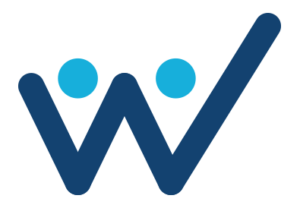Unveiling Workplace Passion And Productivity Drivers
According to Gallup's research, employee engagement is a key driver of business performance. It's also one of the top predictors of business growth and profitability. Employee engagement measures workers' commitment to their job, company, and organization. It can be defined as a worker's positive or negative emotional connection to their workplace. When employees are engaged at work, they're loyal, enthusiastic, and inspired. They want to go above and beyond for the benefit of their team and organization.
Research shows that employee engagement:
- Improves productivity by 13%
- Boosts sales by 37%
- Reduces turnover by 50%
Well, we've identified some key drivers of employee engagement across organizations. Here they are.
Employee Engagement Driver #1: Recruitment Automation
Recruiting is hard. Finding the right candidates, scheduling interviews, and managing applicants can be a huge time commitment. Recruitment automation tools make finding, tracking, and hiring candidates easier. They also help you understand your hiring process and where bottlenecks are occurring.
Specifically, recruitment automation tools help you find candidates faster by automating the process of posting jobs on job boards and social media sites, sourcing candidates, and tracking applications. They also allow you to view your applicant pool in one place to sort through resumes easily, schedule interviews, send reminders, and more from one dashboard.
Recruitment automation is a tool that can be used to help streamline the recruitment process, from finding and attracting talent to managing the entire recruitment process from start to finish. It involves using technology—such as automated Applicant Tracking Systems (ATS) or applicant databases—to manage your hiring efforts. Recruitment automation aims to save time and money by automating parts of your hiring process so you can focus on other areas, such as building relationships with potential candidates or interviewing them face-to-face.
Recruitment automation companies offer many features that other recruitment software programs don’t have. For example, they help recruiters manage their pipeline by allowing them to create pipelines for every role in their company so they can see which positions need new talent first. It also gives recruiters access to internal data, such as employee referrals or past hires to find qualified candidates who already fit into their culture.
Employee Engagement Driver #2: Employee Recognition
Employee recognition is one of the most important drivers of employee engagement. It's also one of the easiest ways to show your employees that you value their contributions and make them feel appreciated. Employee recognition is showing gratitude to employees for their hard work and dedication. It's a great way to boost morale and build camaraderie in the workplace.
Employee recognition programs also increase job satisfaction, productivity, employee retention, and company loyalty. The best way to show employees that you care about them is by rewarding them for a job well done. Employee recognition programs have improved employee engagement by creating a positive environment where employees feel appreciated and recognized regularly. In addition to motivating existing workers, an effective employee appreciation program can help attract new talent by making your company more attractive.
Here are some best practices for employee recognition:
1. Recognition Should Be Timely
Instead of honoring employees when someone has been with your company for 10 years, recognize employees when they do something great! This will help reinforce positive behaviors in your company culture and make it clear that good work gets rewarded, even if it comes from new team members or people who have been with you for less than six months (or even one day).
2. Don't Wait Until An Annual Review To Recognize Employees
Instead, do it as often as possible. Recognition should be immediate and frequent, not once a year, with an elaborate ceremony where everyone gets one award. Acknowledge good behavior immediately so that employees feel recognized and appreciated.
3. Recognition Should Be Specific
Be specific about what an individual did right so others can learn from it too! Think about how this particular action affected customers or other colleagues at work; then, share those details with everyone else, so they know exactly how much impact each person had on making things happen successfully during those key moments when everything came together perfectly without any major hiccups along the way.
4. Be Sure To Correct Their Behavior Before Someone Does Something Wrong
Use positive reinforcement when they do something right! Praise them for good work, encourage them when they make mistakes or fail, and give them credit for what they do well, rather than focusing solely on their shortcomings or failures.
5. Make Sure You're Rewarding The Right Thing
If your organization has a policy against drinking alcohol on company time, then don't reward people who sip on company time with raises or promotions! This sends the wrong message about what behaviors are acceptable in your organization and which are not—and yes, this may happen more often than you think!
6. Give Opportunities For Recognition
Give people more than one opportunity to be recognized each time they do something great. It could be multiple times during an event or over several days or weeks if the accomplishment was significant enough to warrant more than one reward at once.
Employee Engagement Driver #3: Leadership
Leaders can make a real difference in increasing employee engagement. A Gallup study found that leaders account for at least 70% of the variance in employee engagement scores across all organizations studied. Leaders who set a clear vision and direction create an environment where people feel valued, and encouraging collaboration can significantly impact the level of engagement in their teams.
Employee Engagement Driver #4: Culture
The second most important driver of employee engagement is the overall culture of an organization—how people work together as a team and how management and colleagues at work treat them. Culture refers to the group norms, values, and beliefs that determine how people behave in an organization or team. It also includes how people communicate with each other (both verbally and nonverbally).
A healthy culture gives employees opportunities to be heard by management when they have ideas or suggestions for improving processes or products within the company.
Employee Engagement Driver #5: Employee Communication
It's important to keep employees informed of company news and other developments. This can be done through regular meetings, email communication, or social media. If you want your employees to feel engaged and motivated, they must understand what the company stands for and why it exists in the first place.
Communication is essential for creating a culture that supports employee engagement. One of the most important aspects of communication is listening to employees. Listening helps you understand what they need from you and how they want to be treated. Listening also enables you to identify problems before they become big issues that affect performance or morale.
It's also vital that you ensure all questions from employees are answered promptly, so they have access to all the information they need on any given topic. In addition, ensure that there are clearly defined processes for communicating with people at different levels within an organization (e.g., management vs. non-management).
The Why And The How
How can we help each other achieve our goals? One of the most important things for managers/leadership teams when developing strategy is ensuring everyone knows how their role fits into achieving those goals. Employee communication is an effective way to improve your responsiveness and create strong employee relationships.
Good communication reduces stress and conflict while increasing productivity and employee retention. It's also important to ensure that employees have access to information that will help them understand what is happening in the company and why certain changes have been made. Employee communication can be used in many ways by managers, supervisors, and leaders:
- Inform
Provide regular updates on company goals and objectives and important news about organizational changes. - Train
Use training sessions to communicate with employees about new policies or processes they will use on the job. This can be done through videos or live training sessions where managers or supervisors explain how things work at their level of responsibility within the organization. - Coach
Coaching is a great way for managers to develop relationships with their direct reports by giving them feedback on how well they're doing their jobs as well as how they could improve performance over time.
Employee Engagement Driver #6: Opportunities For Learning And Development
People are often referred to as the "new capital." That's because they're a company's greatest asset, and investing in them is the best way to grow. However, employees who aren't engaged will not stay at the company for long. They'll leave for another job where they feel more appreciated or valued. The good news is that there are things you can do as an employer to help boost employee engagement levels. People want opportunities for growth and development. Employees who feel like they're growing and learning will be more engaged than those without those opportunities.
Employees want to know that their ideas are being heard and considered by their managers and leaders. If your organization doesn't have an open-door policy, try instituting one where employees can talk freely about issues without fear of reprisal or punishment from the management hierarchy. You can help your employees grow and develop by providing them opportunities to learn new skills, work on different projects, and get regular feedback. You can also provide opportunities for cross-functional team involvement, which can help your employees make connections with other people in the organization who have similar interests or career aspirations.
Conclusion
This is just a glimpse of what we've learned about employee engagement. We know there's more to learn, so we're continuing our research into what makes people happy at work and how organizations can use this information to improve their cultures.



